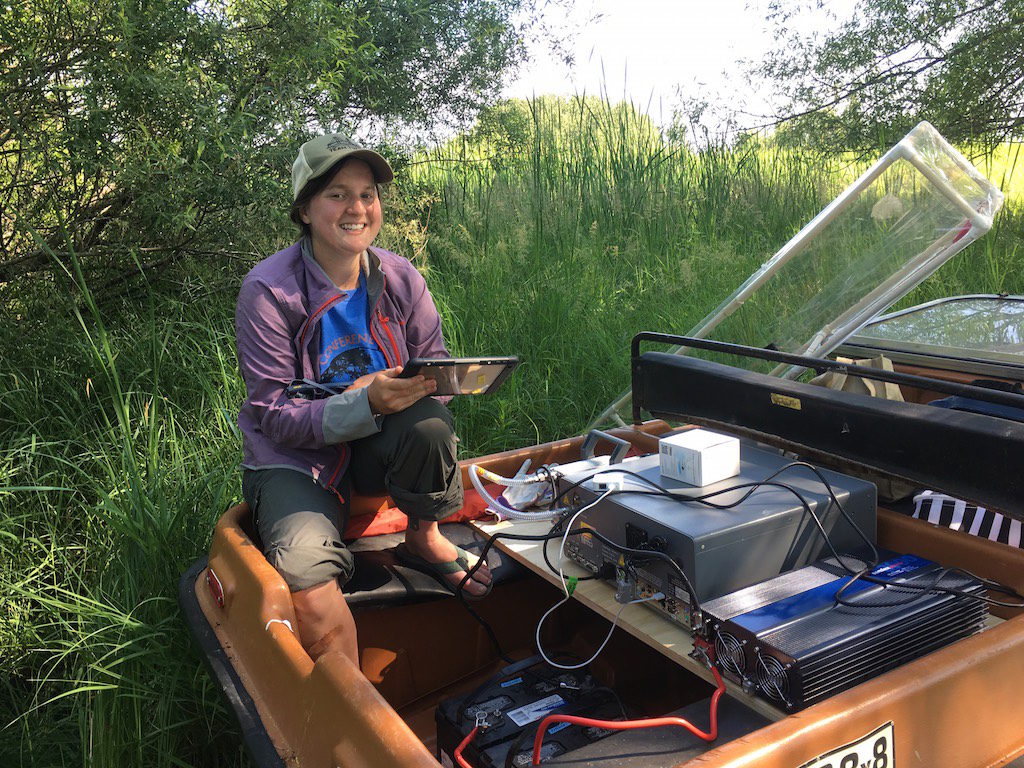
M.S. Candidate, University of Connecticut
2018 Conference Travel Grant Type 2 (Society of Wetland Scientists)
How does invasive plant management affect carbon cycling in Great Lakes coastal wetlands?
“Carbon (C) storage is a primary function that should be included in understanding wetland ecosystem response to restoration treatments. Plant-soil feedbacks underlying wetland C dynamics are well-studied, but little is known about how invasive plant management will affect these interactions. We leveraged a large-scale adaptive management experiment to assess how mechanical disturbance to an invasive macrophyte shifts plant-mediated C uptake, cycling, and release. The targeted species is hybrid cattail, Typha x glauca, an ubiquitous invader in the Great Lakes region. Typha creates dense monocultures and maintains dominance via structural and chemical mechanisms (i.e. litter accumulation and nutrient cycling). For three growing seasons (2015-2017) we harvested (cut above water surface and removed biomass) and crushed (ran over biomass) large experimental plots (60 x 60-m) of Typha and compared a suite of C-related parameters with unmanipulated Typha-dominated controls (harvest, crush, control, n=5). Preliminary data analyses suggest crushing Typha reduces root biomass (crush = 0.0034 ± 0.0007 g/ cm3, control = 0.0067 ± 0.001 g/cm3 ) but this C allocation shift does not alter pore water dissolved organic carbon (DOC). Harvest increased surface water DOC one-year post treatment (harvest = 33.75 ± 9.21 mg/L, control = 11.46 ± 3.90 mg/L), but this difference did not persist in year two. Further, harvest decreased pore water concentrations of acetate, a common substrate for methane-production, (control= 3.11 ± 0.81 mg/L, harvest=1.02 ± 0.41 mg/L). Initial observations suggest differences in long-term methane (CH4) emission (control=harvest > crush) and carbon dioxide (CO2) uptake (harvest=crush > control); further analyses will include water level variation and light penetration, to test how these interact with mechanical disturbance and affect net C flux. Ultimately, these findings contribute to a more holistic understanding of ecosystem responses to invasive plant management.”
